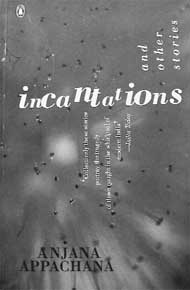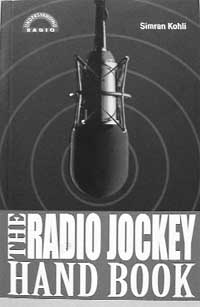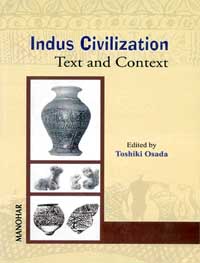|
SHORT TAKES
RJs and civilisation
Randeep Wadehra
Incantations and
other stories
by Anjana Appachana
Penguin. Pages 178. Rs 195.
 Womanhood
in different situations
forms the main theme of this collection of eight short stories. My
Only Gods is about a girl-child who is possessive about her parents
to manic extent. Her insecurities have been highlighted with great
sensitivity. Bahu highlights an educated, employed woman’s
dilemma who marries for love and gets caught in an insensitive
exploitative joint family situation. The Prophecy is a
story of two college-hostel inmates. One of them becomes pregnant
leading to situations laced with irony. When anklets tinkle is
humorous and resolves a prejudice-filled dilemma with unexpected twist
in the tale. Incantations is a heart-rending story of
dream-marriage gone sour with sexploitation resulting in a tragedy that
affects several lives. Similarly Her mother is about illicit love
but with a sober ending. Two stories, Sharmaji and Sharmaji
and the Diwali sweets provide comic relief through an anachronistic
character’s work-shirking antics. Overall, an enjoyable read. Womanhood
in different situations
forms the main theme of this collection of eight short stories. My
Only Gods is about a girl-child who is possessive about her parents
to manic extent. Her insecurities have been highlighted with great
sensitivity. Bahu highlights an educated, employed woman’s
dilemma who marries for love and gets caught in an insensitive
exploitative joint family situation. The Prophecy is a
story of two college-hostel inmates. One of them becomes pregnant
leading to situations laced with irony. When anklets tinkle is
humorous and resolves a prejudice-filled dilemma with unexpected twist
in the tale. Incantations is a heart-rending story of
dream-marriage gone sour with sexploitation resulting in a tragedy that
affects several lives. Similarly Her mother is about illicit love
but with a sober ending. Two stories, Sharmaji and Sharmaji
and the Diwali sweets provide comic relief through an anachronistic
character’s work-shirking antics. Overall, an enjoyable read.
 The
Radio Jockey Handbook The
Radio Jockey Handbook
by Simran Kohli
Fusion Books, N. Delhi. Pages XXVI+200. Rs 195.
After languishing in the
shadow of television for decades, radio has made a strong comeback
thanks to FM channels and the government’s privatisation policy. This
has opened up new avenues for employment, viz., radio jockeys,
script-writers, technicians etc. This handbook is a comprehensive guide
to becoming a successful RJ. It also provides technical details of radio
programming, formatting, presenting etc. This book is certainly of use
to wannabe radio professionals.
Indus Civilization
Ed by Toshiki Osada
Manohar, N. Delhi. Pages: 269. Rs 750.
 The
Harappan or the Indus Valley Civilisation covered an area of more than
1.25 million square kilometers of the subcontinent’s northwestern
parts – spanning India and Pakistan. Today out of 1500 sites only 30
have been excavated. Periodically, research papers on different aspects
of the civilisation get published. This volume is an attempt to study
the impact of local and global environment on the Indus civilisation
throughout its life. Thus the different activities like trade, industry,
town-planning, and language and various other cultural ingredients owe a
lot to environmental influences. It also hints that ‘environmental
problems’ were one of the causes of its downfall. The
Harappan or the Indus Valley Civilisation covered an area of more than
1.25 million square kilometers of the subcontinent’s northwestern
parts – spanning India and Pakistan. Today out of 1500 sites only 30
have been excavated. Periodically, research papers on different aspects
of the civilisation get published. This volume is an attempt to study
the impact of local and global environment on the Indus civilisation
throughout its life. Thus the different activities like trade, industry,
town-planning, and language and various other cultural ingredients owe a
lot to environmental influences. It also hints that ‘environmental
problems’ were one of the causes of its downfall.
In this volume J.S.
Kharakwal provides an overview of various Harappan sites excavated so
far and the archaeological findings there-from. Yo-Ichiro Sato dwells
upon rice cultivation in the Indus area but points out that "a lot
of questions about the staple food-crops in the Indus Civilization still
remain unknown." Michael Witzel posints out that South Asia is not
an isolated entity but has been an acculturation of Central Asian and
other influences like Munda, Dravidian, Indo-Iranian, Tibeto-Burmese
etc.
A great reference book for
students of history, archaeology and related disciplines.
|